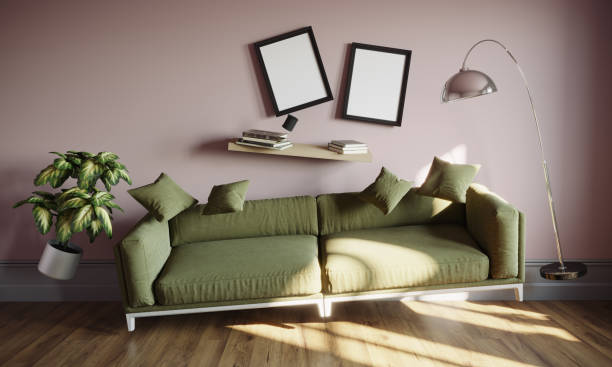Minimalist Magic: Simplicity in Contemporary Graphic Design
In the ever-evolving landscape of graphic design, the allure of simplicity has given rise to a design movement that celebrates clean lines, uncluttered spaces, and a focus on essential elements. “Minimalist Magic: Simplicity in Contemporary Graphic Design” is a guide that delves into the philosophy and techniques of minimalist design, exploring how simplicity becomes a powerful tool for creating visuals that are not only aesthetically pleasing but also communicate with clarity and impact.
I. The Essence of Minimalism in Design
1.1 Defining Minimalism in Graphic Design
Minimalism in graphic design is characterized by the deliberate use of simplicity, restraint, and a focus on essential elements. This section will define the core principles of minimalist design, exploring how it distills visuals to their fundamental components and relies on the power of simplicity to convey messages.
1.2 The Influence of Minimalist Movements in Art and Design
Minimalist graphic design draws inspiration from earlier artistic movements, such as minimalism in visual arts and the Bauhaus movement. This part of the guide will trace the roots of minimalist design, highlighting how these movements influenced the emergence of simplicity as a design philosophy.
II. Less is More: The Power of Negative Space
2.1 Negative Space as a Design Element
Negative space, the empty or unmarked space around and between the main elements of a design, takes center stage in minimalist design. This section will explore how negative space serves as a crucial design element, creating balance, clarity, and a sense of openness in minimalist compositions.
2.2 The Art of Whitespace: Balancing Elements
Whitespace, synonymous with negative space, plays a pivotal role in minimalist design. Designers will learn how to master the art of whitespace, strategically placing elements to achieve balance and harmony. This part of the guide emphasizes the importance of thoughtful composition in minimalist magic.
III. Simplifying Typography and Iconography
3.1 Typography in Minimalist Design
Typography in minimalist design is characterized by clean, sans-serif fonts and a focus on legibility. This section will delve into the principles of minimalist typography, exploring how designers choose and arrange fonts to convey information with clarity and simplicity.
3.2 Iconography: Distilling Concepts into Symbols*
Icons, as simplified visual representations, align seamlessly with minimalist design principles. Designers will explore how iconography is employed to distill complex concepts into easily recognizable symbols, enhancing visual communication in a concise and minimalist manner.
IV. Monochromatic and Limited Color Palettes
4.1 Monochromatic Elegance
Minimalist design often embraces monochromatic color schemes, relying on a single color or a limited palette. This section will discuss the elegance of monochromatic designs, exploring how a restricted color palette contributes to visual coherence and simplicity.
4.2 Limited Color Palettes for Impact
Beyond monochromatic designs, minimalist graphics often leverage limited color palettes. Designers will learn how to choose and use colors intentionally, creating designs that make a bold impact with a minimal range of hues. This part of the guide emphasizes the strategic use of color to enhance minimalist aesthetics.
V. Grid Systems and Precision in Layouts
5.1 Grid Systems: Order in Simplicity
Grid systems provide a structured framework for minimalist layouts. Designers will explore the role of grid systems in creating order and precision in minimalist designs, ensuring a harmonious arrangement of elements. This section delves into the principles of grid-based layouts as a foundation for minimalist magic.
5.2 Precision in Alignment and Proportions
Precision in alignment and proportions is key to minimalist design’s visual appeal. Designers will learn how to align elements precisely and maintain consistent proportions, contributing to the overall sense of order and simplicity in their compositions. This part emphasizes the meticulous attention to detail required for minimalist perfection.
VI. Minimalist Branding and Corporate Identity
6.1 The Rise of Minimalist Branding
Brands are increasingly adopting minimalist aesthetics for their visual identities. This section will explore the minimalist branding trend, examining how brands leverage simplicity to communicate a modern, sophisticated, and timeless image. Designers will understand the principles behind crafting minimalist brand identities.
6.2 Consistency in Corporate Minimalism
Corporate identity, including logos, stationery, and other brand collateral, benefits from the consistency of minimalist design. Designers will discover how maintaining a minimalist approach across various touchpoints reinforces a brand’s visual identity, creating a cohesive and memorable corporate image.
VII. Embracing Minimalism in Digital Interfaces
7.1 Minimalist Web Design: User-Focused Simplicity
Minimalism has found a natural home in web design, where user-focused simplicity is paramount. This section will explore minimalist web design principles, emphasizing the importance of clear navigation, uncluttered layouts, and an immersive user experience. Designers will learn how to create minimalist digital interfaces that prioritize usability and aesthetics.
7.2 Mobile App Design: Streamlining User Interaction
Minimalist principles extend to mobile app design, where streamlined user interaction is essential. Designers will discover how minimalist aesthetics and intuitive user interfaces enhance the user experience in mobile applications. This part of the guide explores the principles of minimalist app design and its impact on user engagement.
VIII. Minimalism and Environmental Design
8.1 Environmental Graphic Design: Simplifying Spaces
In environmental graphic design, minimalist principles contribute to simplifying physical spaces. This section will delve into how minimalist aesthetics are applied to signage, wayfinding, and other environmental graphics, creating a seamless and visually cohesive experience in physical environments.
8.2 Sustainability in Minimalist Design
Minimalism aligns with sustainable design practices. Designers will explore the intersection of minimalism and sustainability, considering how a focus on essential elements, reduced material usage, and intentional design choices contribute to eco-friendly and visually impactful solutions.
Conclusion
“Minimalist Magic: Simplicity in Contemporary Graphic Design” celebrates the enduring appeal of simplicity as a design philosophy. Designers, armed with the principles and techniques outlined in this guide, are poised to wield the power of minimalism to create visuals that are not only visually striking but also communicate with clarity and impact. As the world of graphic design continues to evolve, minimalist magic remains a timeless and transformative approach, proving that sometimes, less truly is more.






